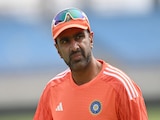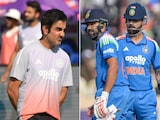Myopia, or nearsightedness, has become increasingly common over the past few years around the world. Data highlights that by 2050, the global prevalence of myopia is predicted to increase, and nearly half of the population will be myopic.
Myopia is a condition in which one has difficulty seeing objects that are farther away, typically beyond 20 feet. Myopia affects a significant percentage of people, particularly before the age of 20. Myopia treatments include glasses, contact lenses, or surgery.
As myopia cases are on the rise in children, we spoke to Dr. Pawan Gupta, Senior Cataract & Retina Surgeon at Eye 7 Hospitals, Lajpat Nagar & Vision Eye Clinic, New Delhi, to understand the possible reasons behind the growing myopia cases in kids.
"When the eye grows too long, meaning that distant objects appear blurry. While there are genetic factors, the increasing number of cases is primarily due to changing lifestyles, particularly for younger children," said Dr. Pawan Gupta.
Causes of myopia in kids
"One of the biggest reasons for the increasing number of myopia cases is the screen time and reliance on digital devices. Most schoolwork, entertainment, and social interactions now happen on screens. As a result, children are spending increasingly larger amounts of time focusing on screens closely."
"Extended screen time is returning signals to child's eye to adapt to near vision, and has gradually weakened distance vision over large amounts of time," the expert explained.
Additionally, the expert mentioned that a lack of sunlight exposure is linked to a rise in myopia in children. "Many researchers believe children need at least two hours of outdoor sunlight each day to develop their eyes and to prevent negative developmental outcomes. Sunlight stimulates the release of dopamine in the retina, which can slow abnormal eye growth, which is correlated to myopia. Where I currently reside in the Pacific Northwest, children largely remain indoors now, effectively steering around protective mechanisms," he added.
Genetics may also play a role. If one or both parents are myopic, the child is likely to be myopic. "While you cannot control genetics, you can make sure your child has eye checkups early on and healthy habits, which can minimize the damage," Dr. Gupta said.
Prevention tips
"To prevent myopia, some conscious lifestyle changes must be made. The first step is to cut down on screen time," he advised.
The expert recommends an hour or less of screen time after school. He also recommended the 20-20-20 rule, which is a simple technique to prevent digital eye strain by taking a 20-second break to look at something 20 feet away for every 20 minutes spent focusing on a screen. This allows the eye muscles to relax and reduce stress.
"Outdoor play is essential. Families must encourage their children to play outside in the sunlight. This benefits vision, but also health and general well-being. If your child is diagnosed with myopia, there are treatments available that can help slow the progression of myopia (for example, special lenses, low-dose atropine eye drops, orthokeratology- night lenses)," he added.
Myopia is not just a vision problem; it is now a growing public health problem. Parents can help protect their children's vision for the future by limiting screen time, encouraging outdoor play, and implementing early intervention.
Disclaimer: This content including advice provides generic information only. It is in no way a substitute for a qualified medical opinion. Always consult a specialist or your own doctor for more information. NDTV does not claim responsibility for this information.















